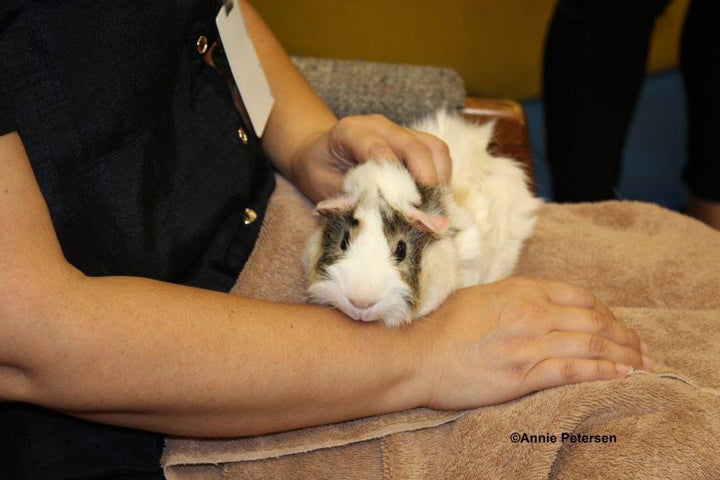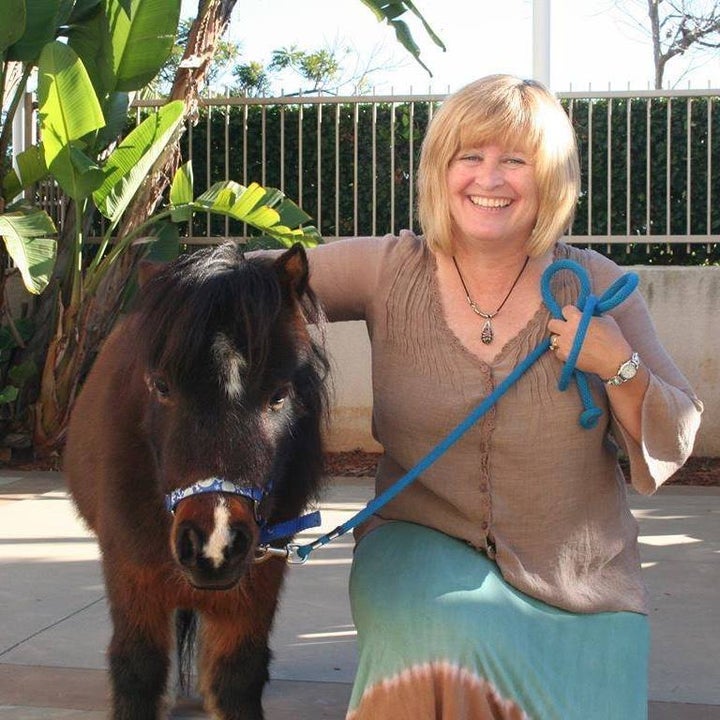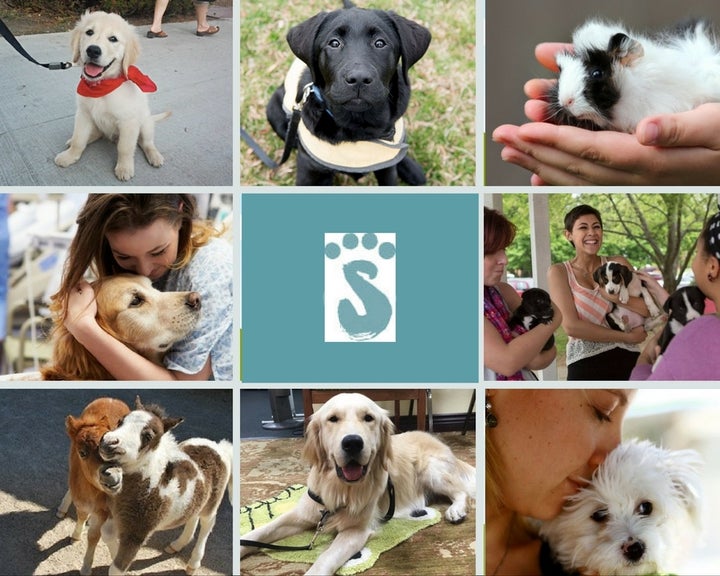
A Short History of the Human-Animal Bond
People of all ages have had experiences with animals, and the love for a pet holds no cultural or generational boundaries. Historically, animals have been regarded as deserving of the highest levels of esteem and have also held the lowest levels of cast; the creatures to be pitied. However, regardless of one’s opinion or regard for animals, they have held prominence within society around the world and have the capacity to greatly influence our daily lives.
The relationship between humans and animals is ageless and complex and, as civilizations developed, so did the relationship between ancient people and animals. In some cases, that relationship turned toward reverence, as animals came to embody society and its environment.
As humans’ reliance on animals developed, early North American cultures began to expand interdependence with domestic animals. Within Chipewyan mythology of Canada, there was the belief that a dog had facilitated the creation of the human race. Also, dogs appear to be among the first animals not only to only share homes with people but to work side by side with people helping with fieldwork and security to the family.
Over the centuries, as human populations expanded, the wild population of animals came closer to homes and communities of people. Slowly, these animals became domesticated and played a prevalent role, being elevated to the role of companion animal.
As humans we can acknowledge the likenesses we have with animals. The search for comfort, protection and a means of survival is common among all living beings. Our dependence upon animals for our survival and comfort can be seen on the ancient cave drawings of Lascaux in France and Altamira in Spain which were created over 20,000 years ago.
What is survival though?

How Animals Can Influence Us
Our images of survival really depend upon where we are in our lives. I am not an eating disorder survivor, but I do believe in the power of the human-animal bond and that my survival is dependent upon my relationship with animals. Animals can offer us a measure of healing that in many ways is difficult to find elsewhere. The inclusion of animal-assisted therapy has been important to the reduction of stress and benefits recovery.
I would like you to do something for a moment. Close your eyes and imagine yourself petting your dog, your cat, or even a rabbit or guinea pig. Think of how you feel while you are petting that animal. How does the animal feel. Listen to your breathing and focus on the reaction of your body. How animals make us feel and their partnership with us in healing has been a point of study for many years now and the results are significant in mental health recovery.
Research on animals and their influence on our lives began over 100 years ago. In the late 19th and early 20th centuries, developmental psychologist G. Stanley Hall began to study the psyche of children and the influence of animals on adolescent consciousness. One hundred years ago, when the study was conducted, children were exposed to a more natural environment, which included wildlife. The children tended to be more aware of animals and their role in the environment. The findings of Hall’s study also indicated that children from the cities did not have the same awareness of animals as their pastoral counterparts, indicating a lack of knowledge regarding their physical world. As the rural way of life began to decrease and industrial existence increased, more and more children became educated in the classroom setting and concerns regarding the lack of “real-world” lessons grew.
Child psychologist Levinson (1962) studied specifically how companion animals affected children during therapy. He observed that children who had an animal with which to interact during sessions were more inclined to communicate freely in the therapeutic setting. Levinson found that having a pet participate in the sessions lessened anxiety in the client and helped with social development.
The potential result of animal-assisted therapy may contribute to relaxation and reduce stress that supports recovery. In an effort to alleviate many of the anxieties of people in recovery, animal-assisted therapy has been successfully used in many environments as interactions with animals not only fulfills the need for companionship but improves general overall health and the quality of life for people.
The diversity of everyone’s background is vast and so is the diversity of different healing processes. As rapidly as communities transform and shape themselves to fit into the rest of world society, so must the therapeutic settings within those communities. Whether you are in recovery for an eating disorder, alcoholism, or PTSD—animals can ground us. In Temple Grandin’s book, Animals Make Us Human, she talks about how as we improve the quality of life for animals, in turn we become more quality people. Merits of responsibility, patience, and the give and take of love are actions that we find within ourselves in the presence of animals.
Mahatma Gandhi wrote, “The greatness of a nation and its moral progress can be judged by the way its animals are treated.” When we integrate animals into our lives while in recovery, they are teaching far more than peace and mindfulness; they are also teaching life skills and attitudes. Animals can be used as a powerful tool to inspire and engage us.
by Dr. Annie Petersen (President and CEO of the Association of Human-Animal Bond Studies, Executive Board Member of SoulPaws Recovery Project)

Therapy Miniature Horse, JJ, and Dr. Annie Petersen at a SoulPaws Workshop!
Animals as Healers - A Personal Testimony
My eight-year battle with bulimia began at sixteen with a plan to lose some weight. Not to lose my teeth and hopes and dreams. Not to end up hospitalized at an eating disorder rehab in the middle of the Arizona desert. Not to break my mother's heart. Not to carry around lozenges for my perpetually sore throat, Visine for my bloodshot eyes and paper towels in my car to clean up after vomiting. Not to throw up 20 times a night, every night.
This secret bulimic life I had was not the life I wanted, yet it seemed that no matter how much therapy or medication or rehab, I was a hopeless case. Each failed attempt at recovery only added shame to the pot and further convinced me that recovery was impossible.
Nothing changed -- not my perspective or my behavior -- until I started working at the San Diego Humane Society in my mid-20s. It was there, in dirty kennels and tiny rooms, that an unexpected and transformative kind of healing took place. It was there, in little doses, that I began making room in my heart, instead of my stomach, for the uncomfortable.
Whenever I felt depressed or overwhelmed, I'd find a big dog, usually a pit bull who believed she was a lap dog, and I'd hold onto her bulky body like an anchor as waves of emotion and destructive urges passed through me.
When every molecule of my being wanted to numb out and run away, she'd help me to feel and stay. With a creature who knew no other way of being than in the here and now, I could drop my methods of self-protection and let my tender, real, vulnerable self be seen. The anxious and broken person who walked into the kennel faded into the background, and in its place, there was simply an outpouring of love between a girl and a dog.
That love -- love the most desperate dogs showed me at my most desperate times -- is the reason I'm alive today. It is also the reason I’ve partnered with Dr. Annie Petersen to create SoulPaws Recovery Project, offering free animal-assisted therapy to those affected by eating disorders.
Eating disorders are complex, biologically-influenced disorders, often triggered by trauma. Anorexia, bulimia, binge-eating disorder and other types of eating disorders offer an illusory sense of protection—a temporary shield from pain and discomfort. This shield feels like it is protecting us, when in reality, we are being crushed under it’s weight.
To drop the shield means to get uncomfortable, and to engage in the most challenging work of our lives. Studies show that this emotional work can be easier to do with an animal by our side, and researchers, such as Dr. Annie Petersen, continue to explore why.
By creating a free and easily accessible therapeutic community, SoulPaws animal-assisted therapy helps to combat the shame and secrecy so inherent in eating disorders. Our aim is to create a pack of recovery and love that can remind us, particularly on the days when we want to isolate, that we are never alone!
By Shannon Kopp— Founder of SoulPaws Recovery Project, Author of Pound for Pound: A Story of One Woman’s Recovery and the Shelter Dogs Who Loved Her Back to Life (HarperCollins Publishers)

